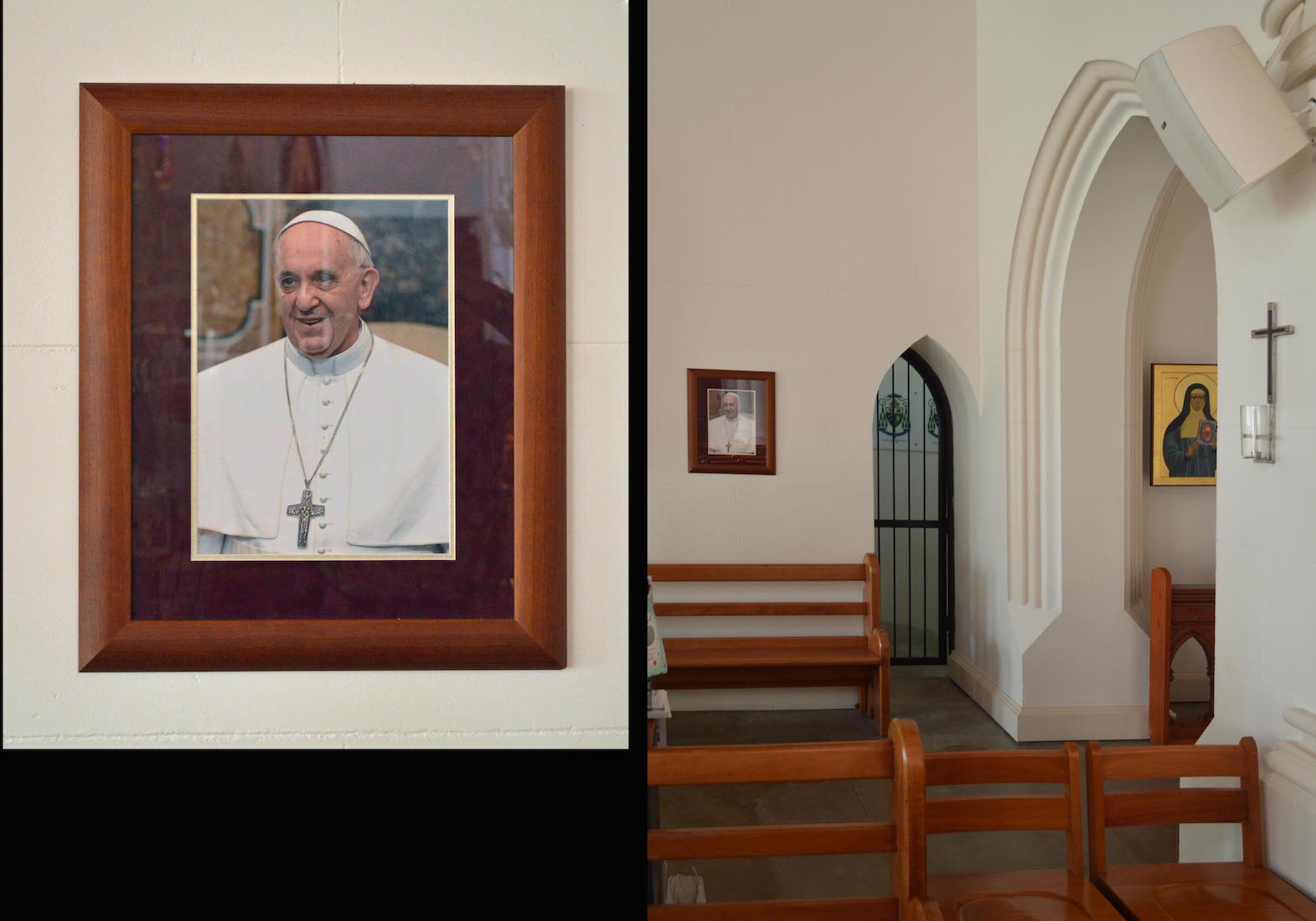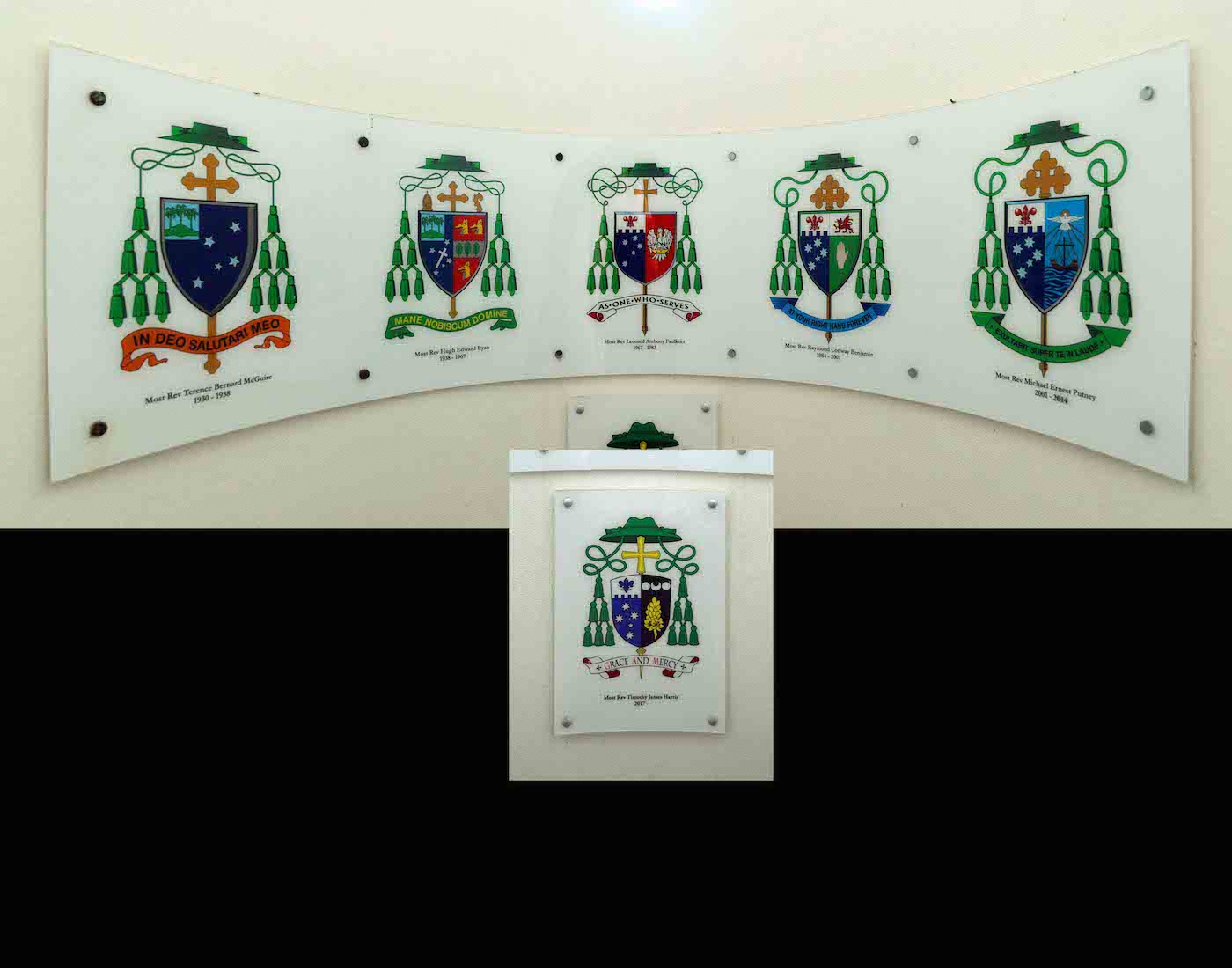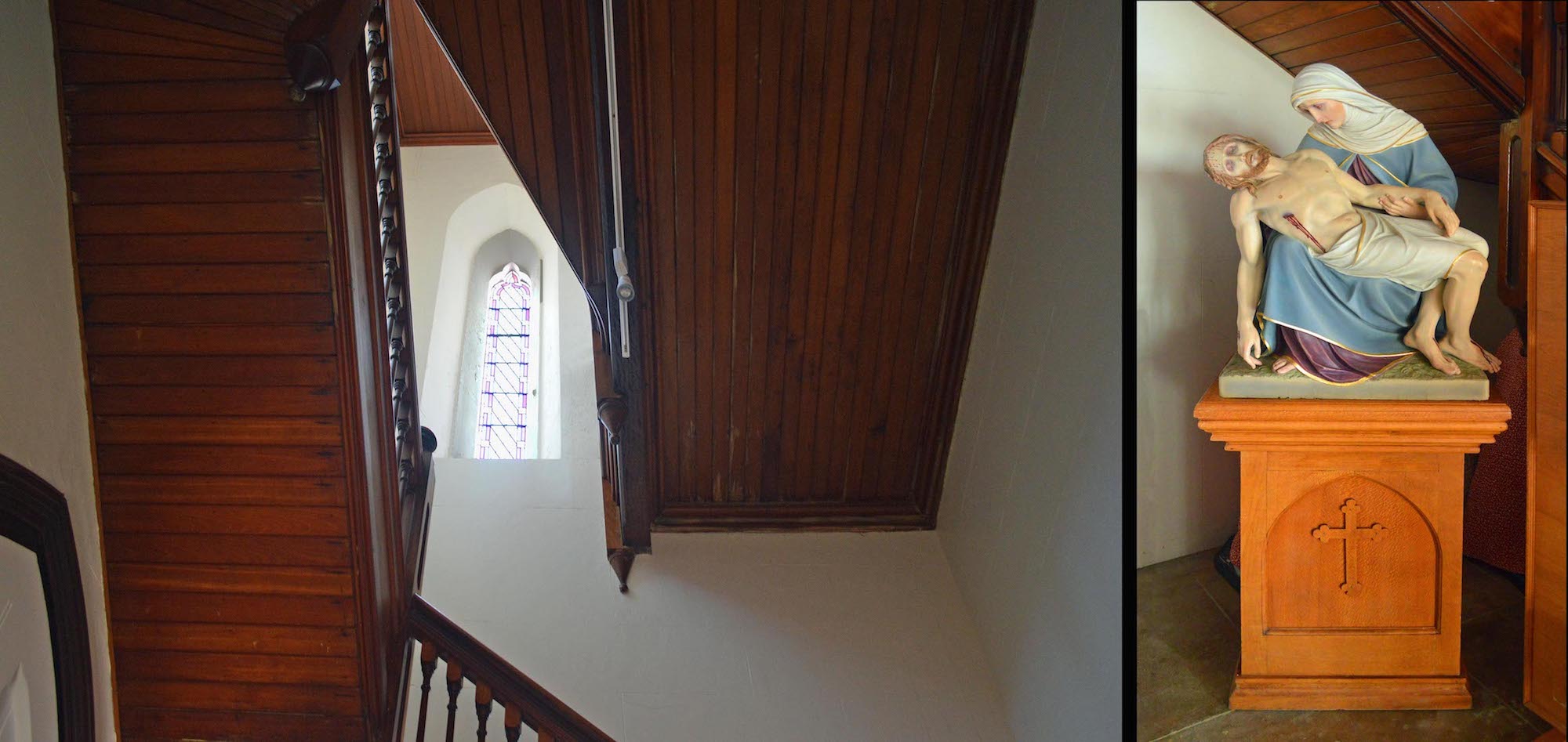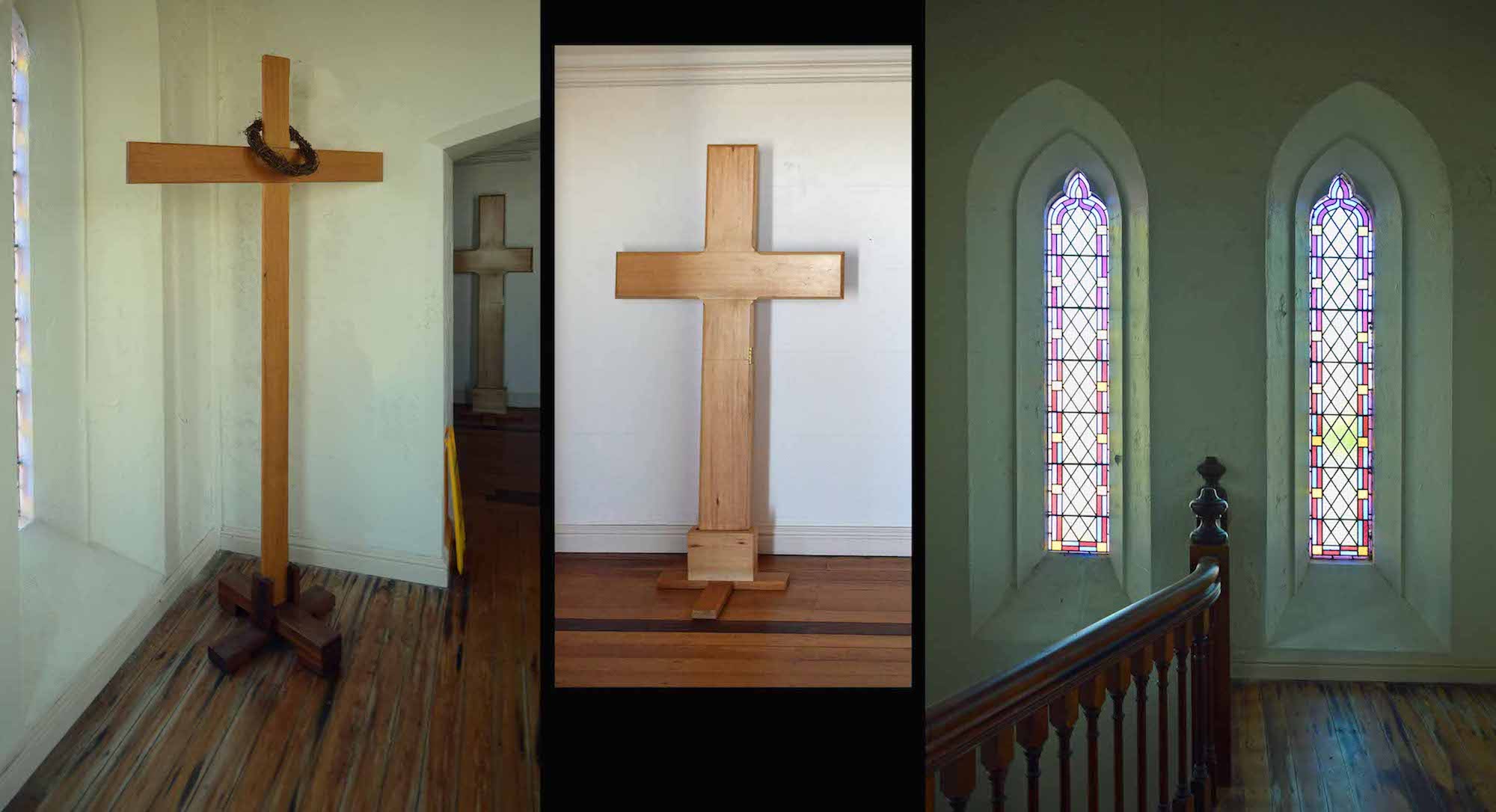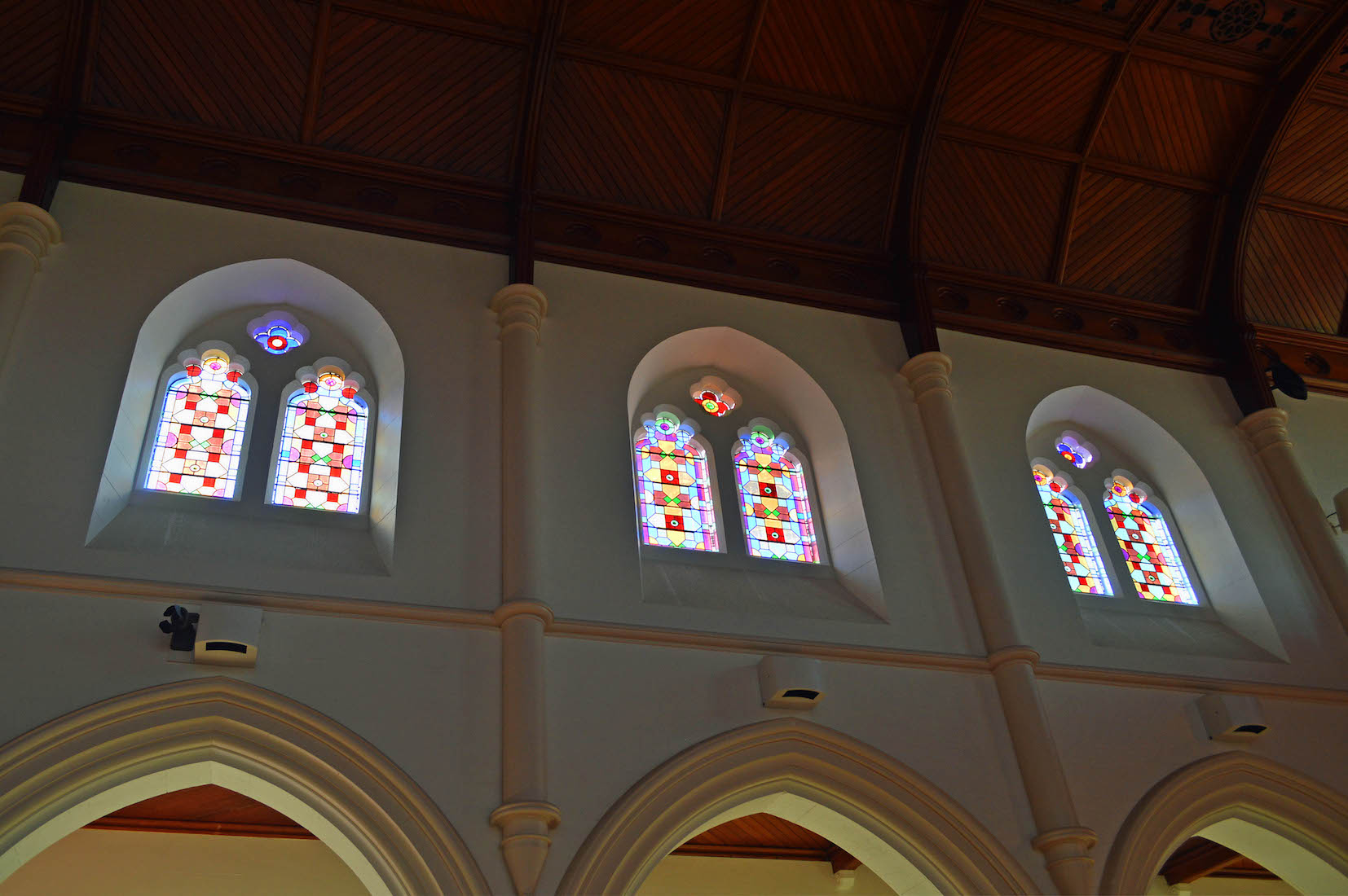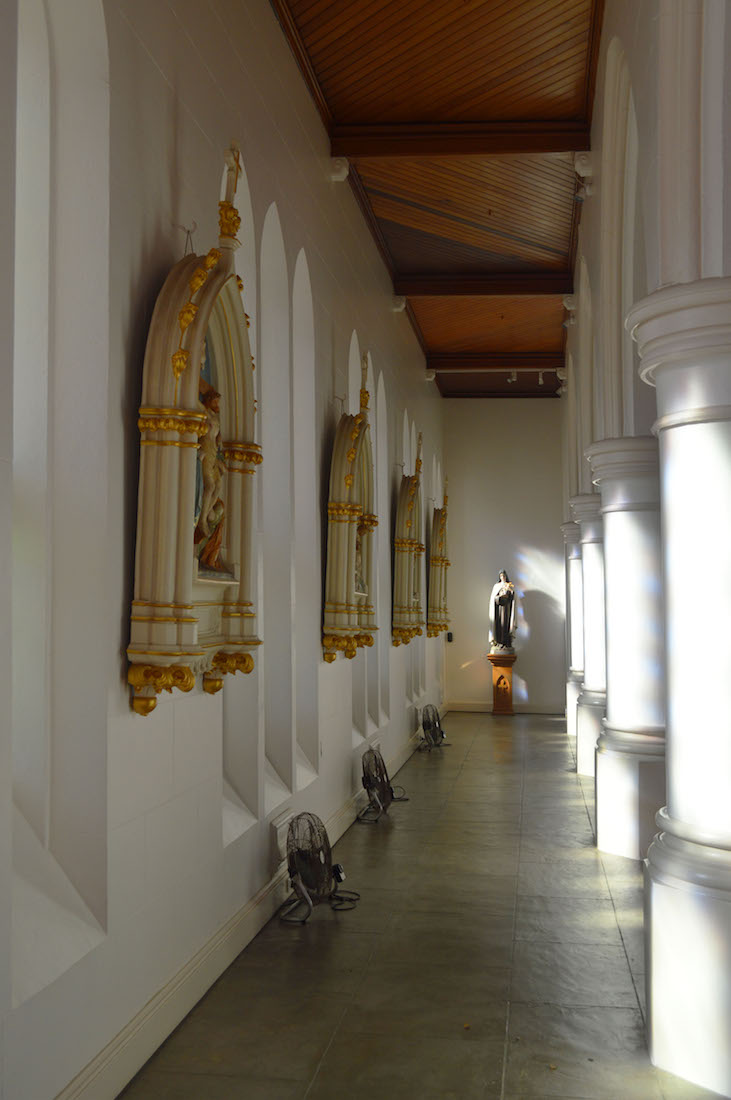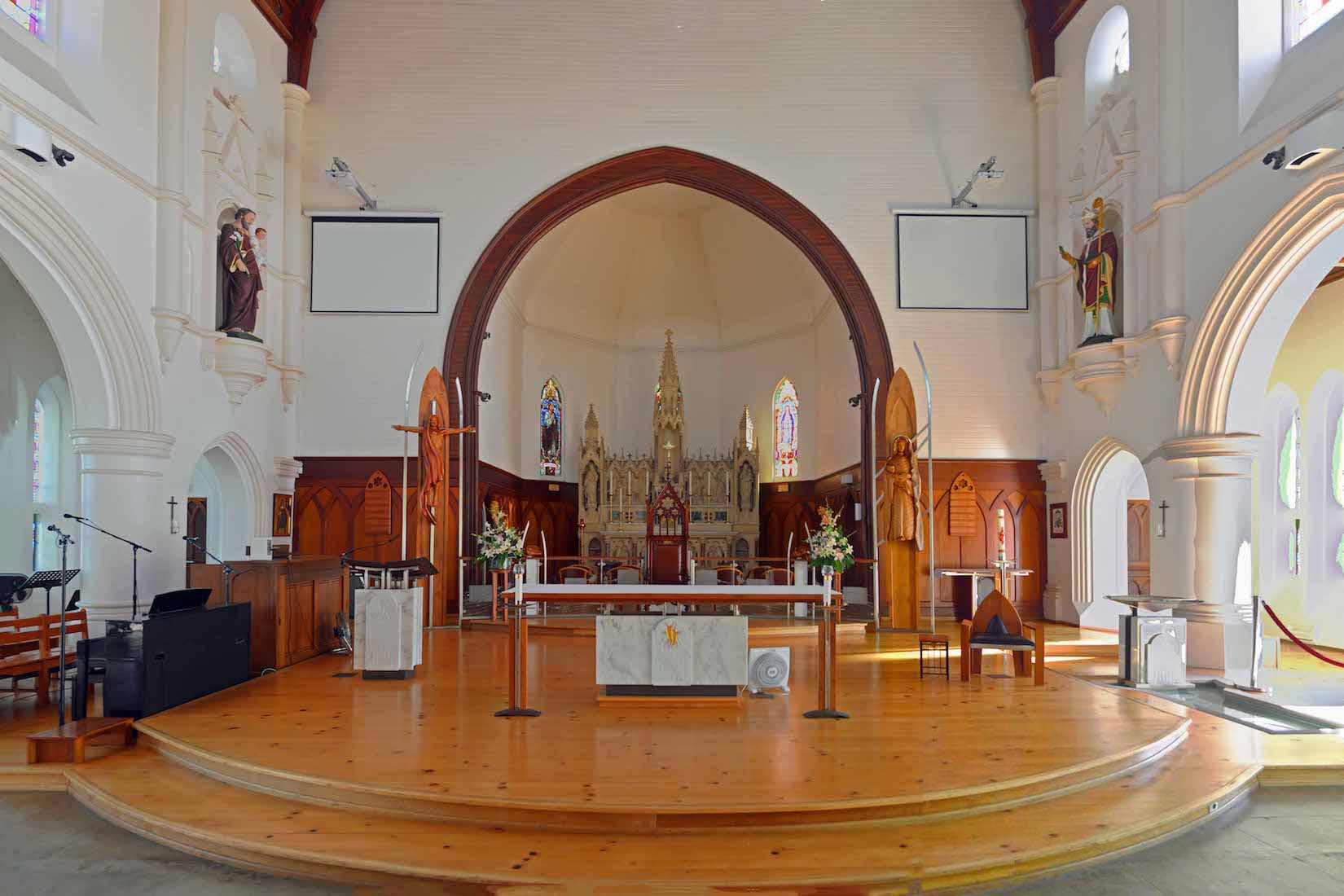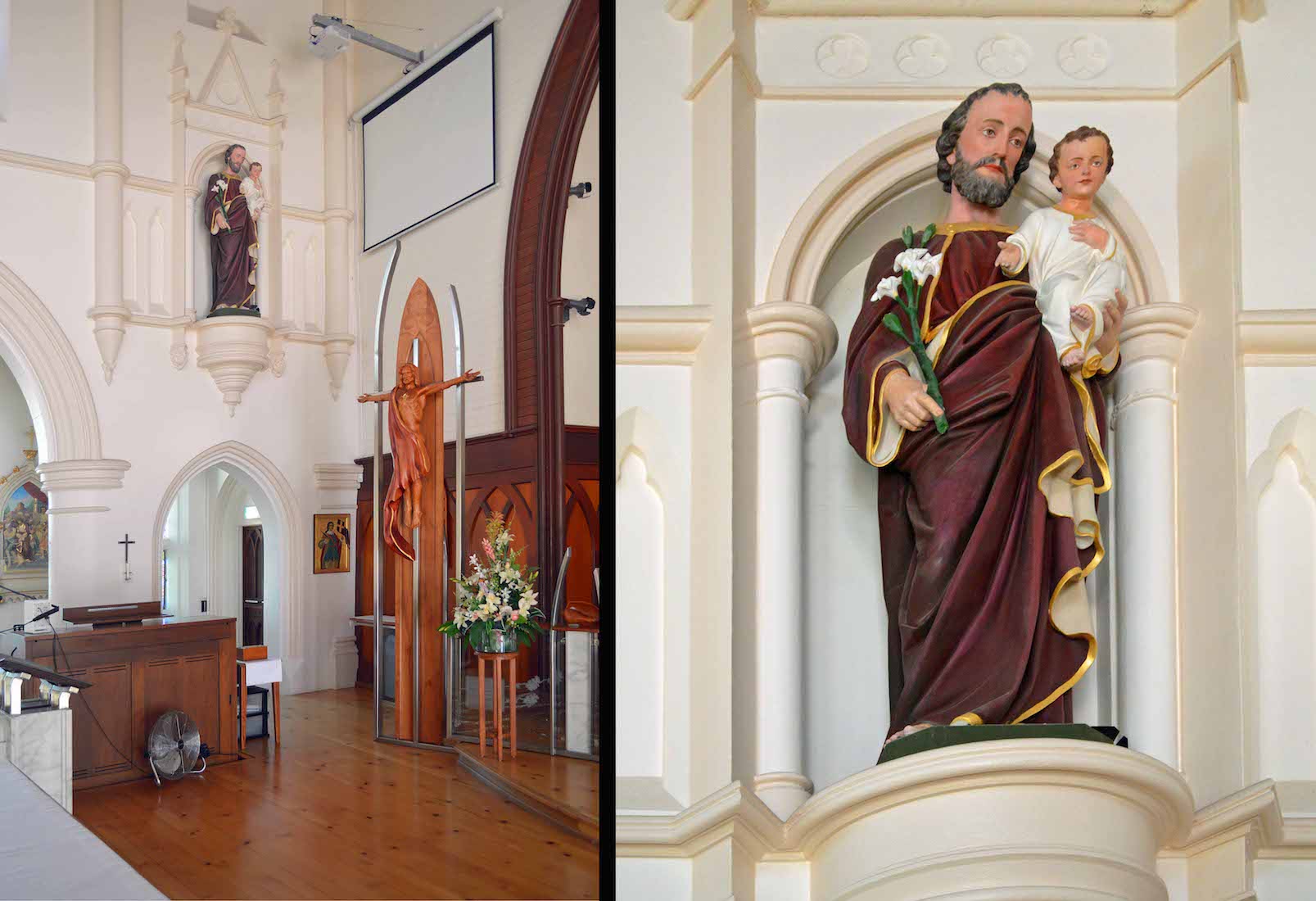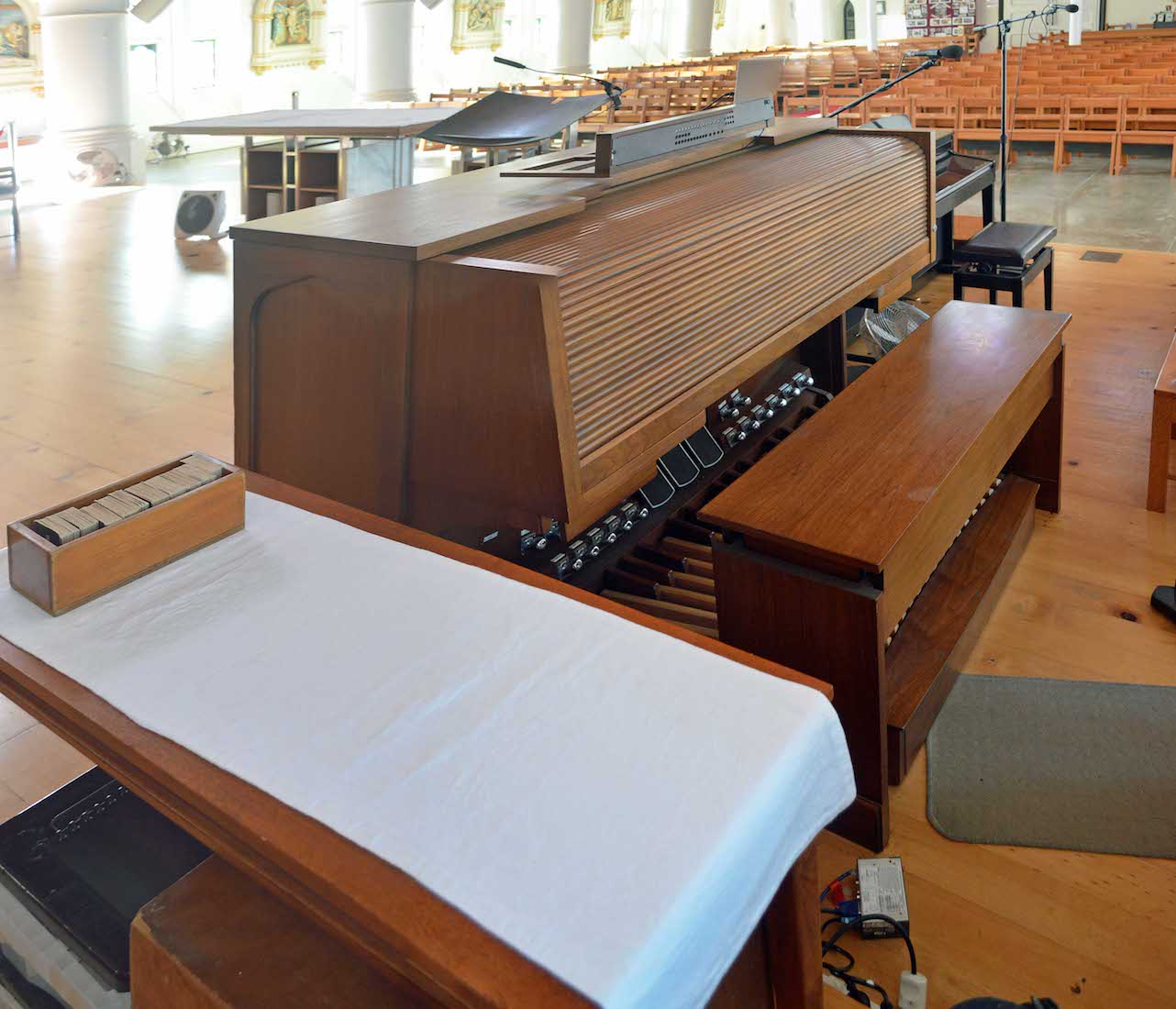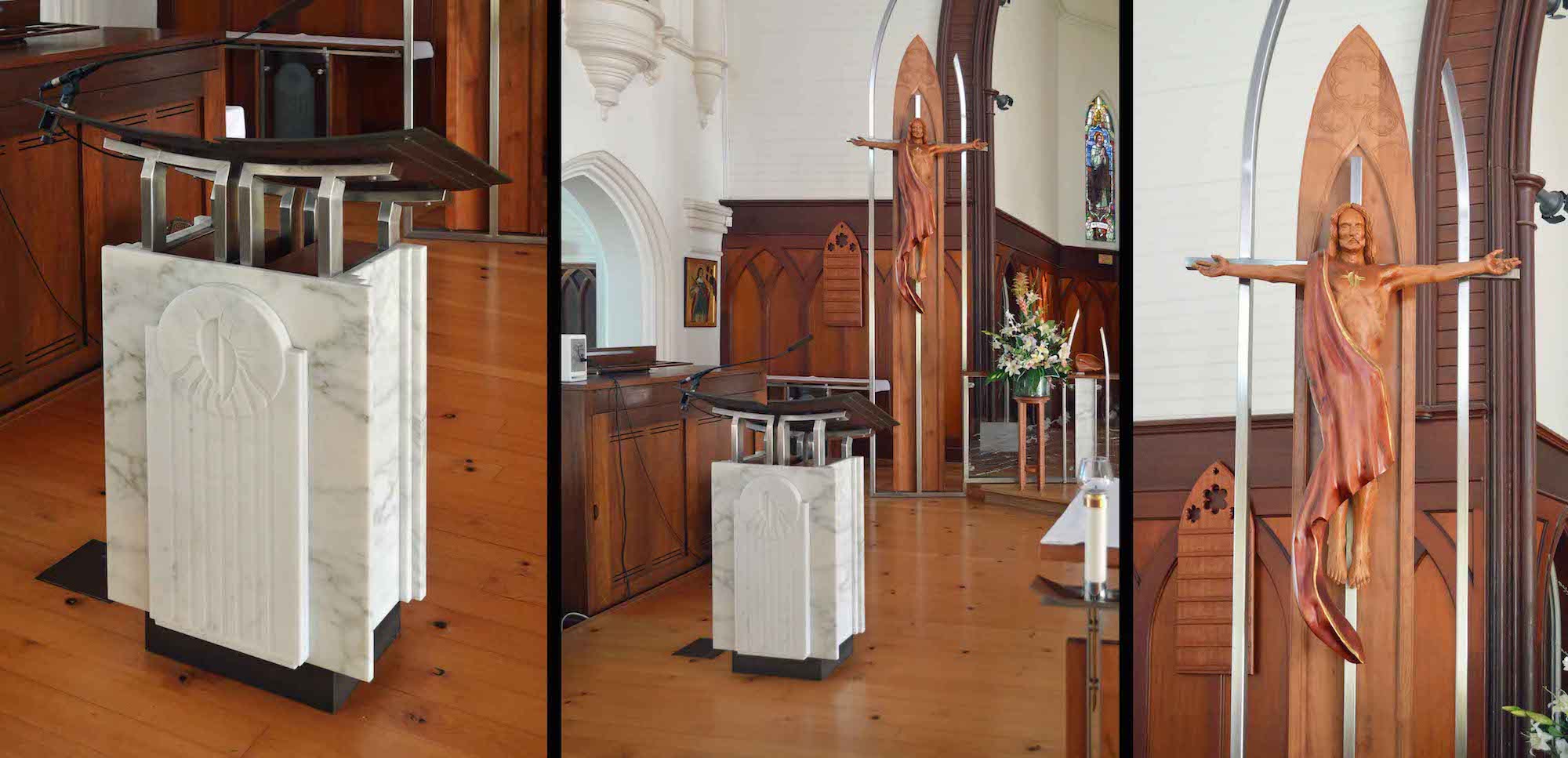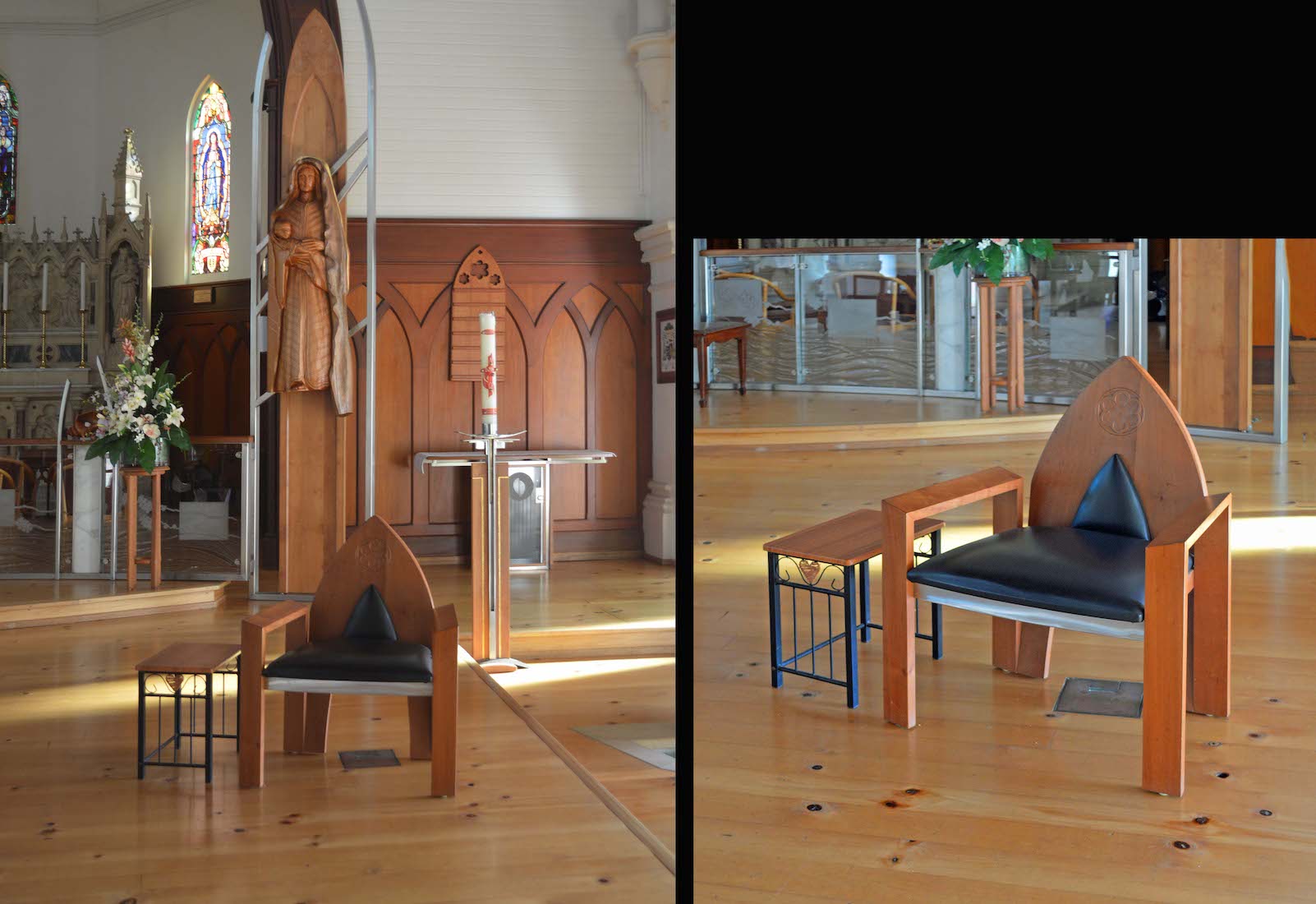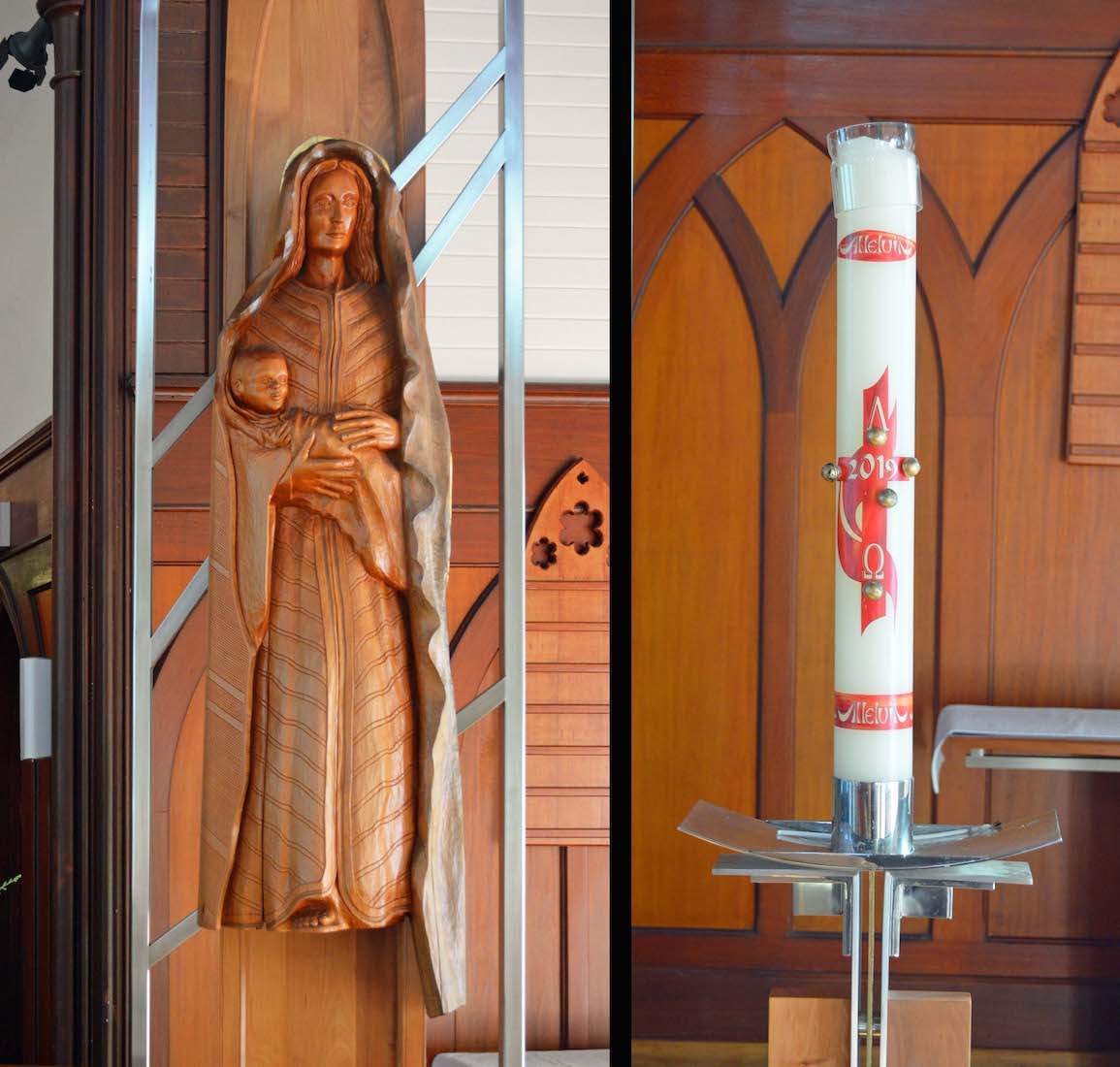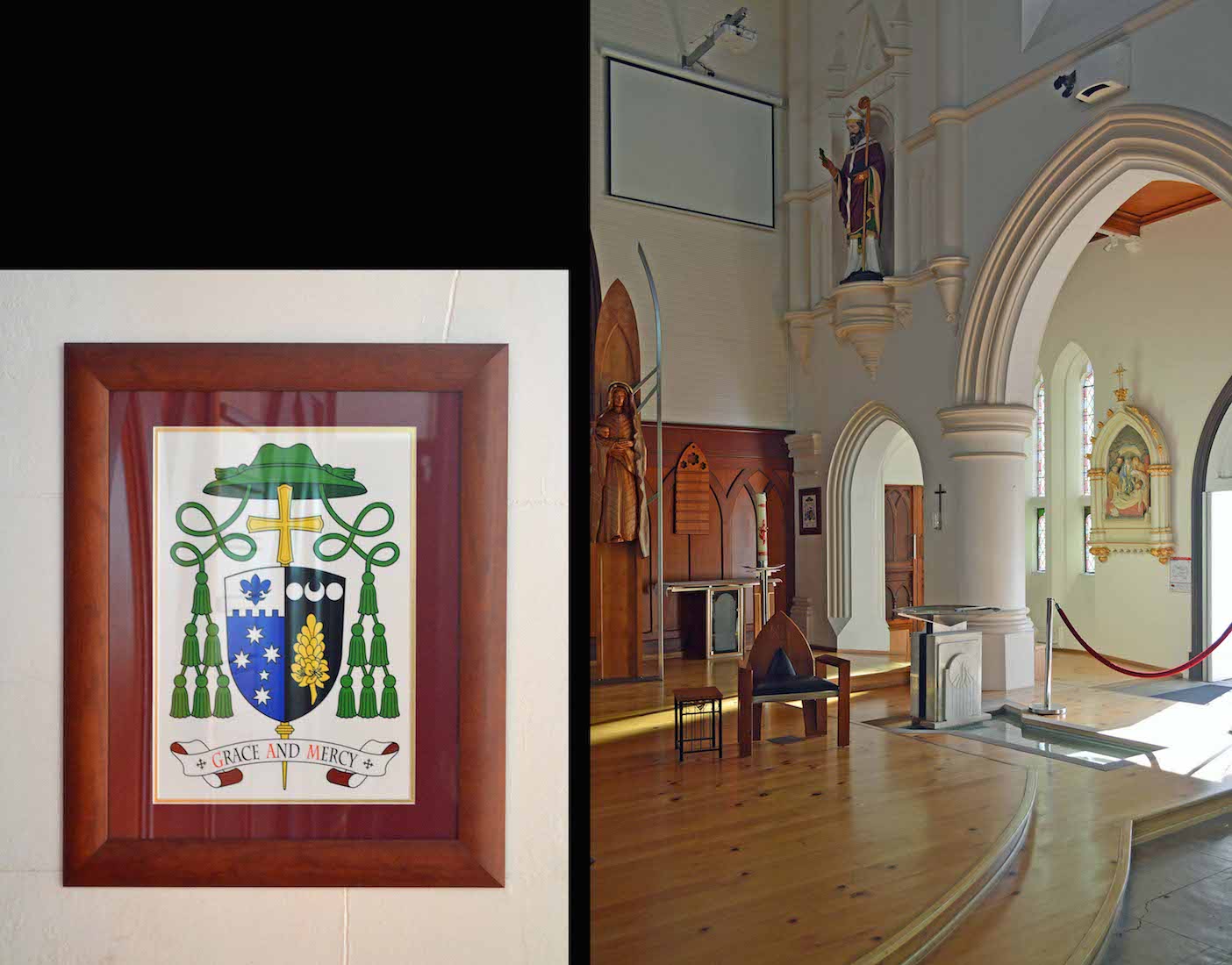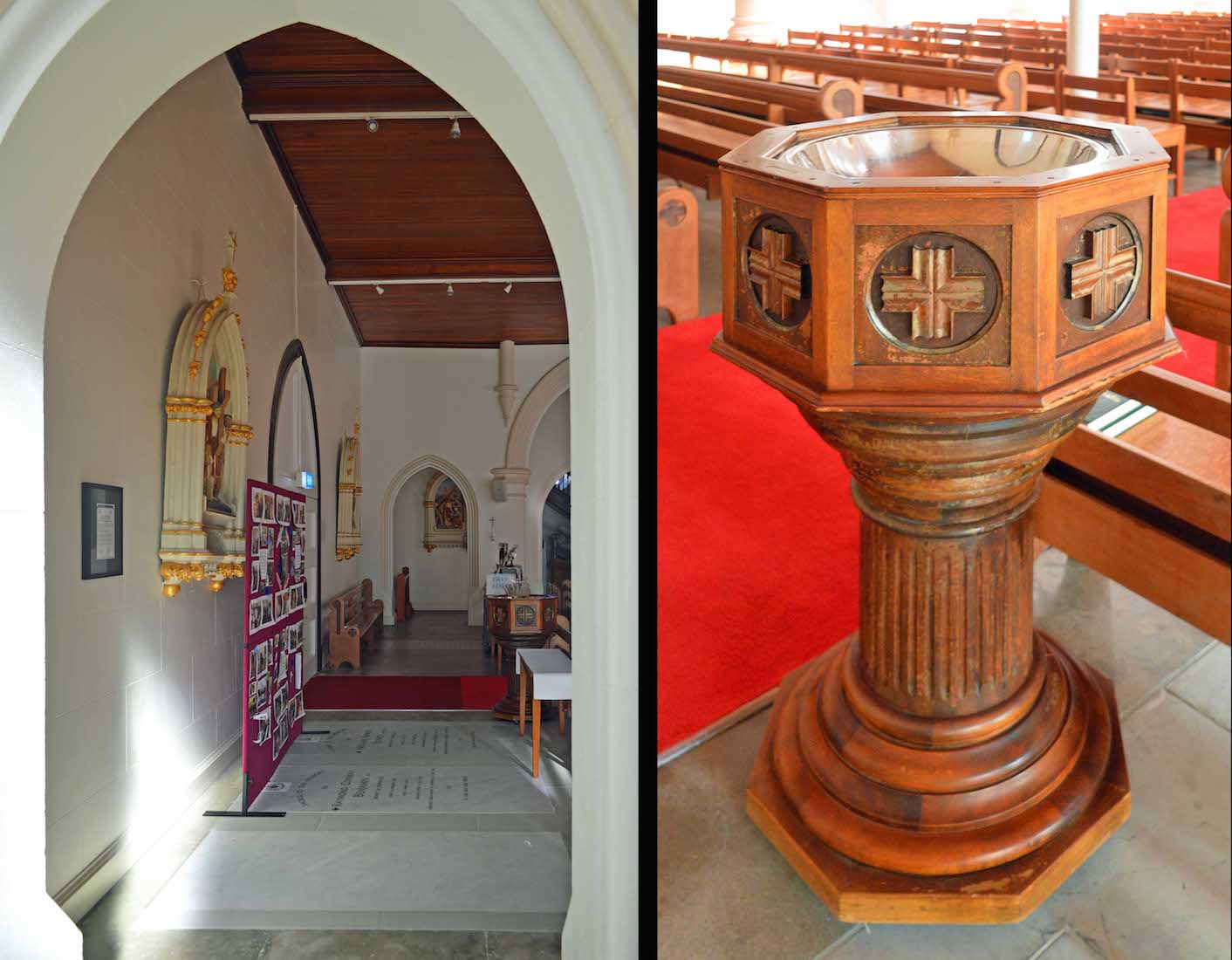
Looking back across the nave from here we notice three tombstones set into the floor. To the right is a baptismal font. The Church regards baptism as the initiation into both the Christian life and entry into the Church. There is some symbolism then in placing the baptismal font close to the main entry of the Cathedral. INDEX
22. TOMBSTONES
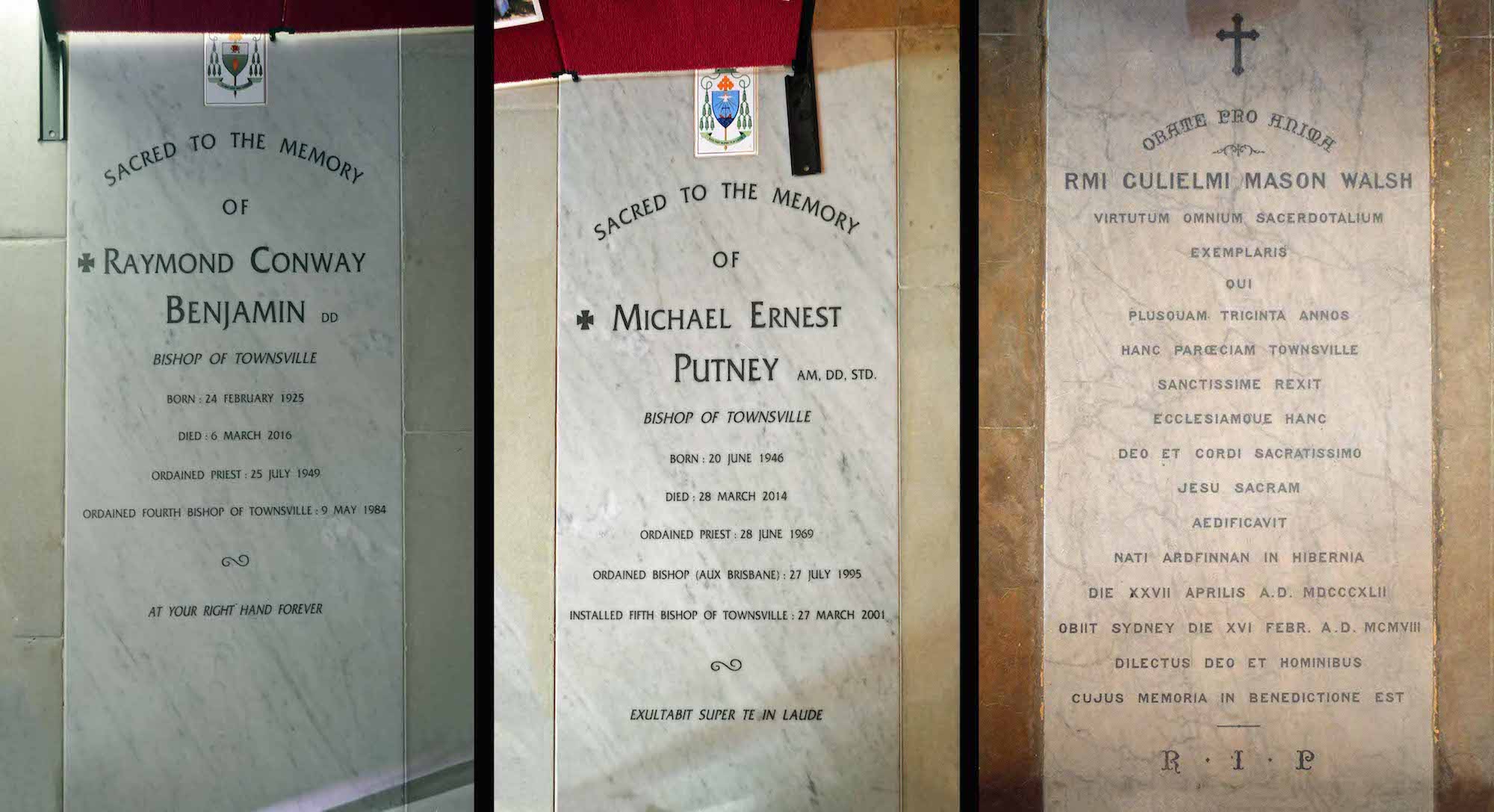
There are three tombstones set into the floor along this back aisle. They belong to: • Raymond Conway Benjamin DD 1925–2016, ordained Fourth Bishop of Townsville 1984. • Michael Ernest Putney AM, DD, STD 1946–2014, installed Fifth Bishop of Townsville 2001. • Father William Mason Walsh 1842–1908. Walsh was the second Parish Priest of Townsville, and much loved.
23. NORTHWEST NAVE
In the Southwest corner of the nave there is a portrait of Pope Francis, a grilled entry into one of the West face Cathedral towers, and an archway through to the North aisle – where some icons are hanging.
24. BISHOPS’ CRESTS
Looking through the grill into the base of the small tower we see on the wall a display of Bishop’s crests. The names and dates of holding office of the Bishops are also given. The set starts with the First Bishop, Most Rev Terrence Bernard McGuire 1930–1938, and finishes with the present Sixth Bishop, Most Rev Timothy James Harris 2017.
25. ICONS
At the West end of the North aisle, there are three icons hanging on the wall. There are three Marys here: • St Margaret Mary Alacoque, whose name is associated with the doctrine of the Sacred Heart; • the Virgin Mary, Mother of Jesus, pictured here in her role as Help of Christians; • St Mary of the Cross – Mary Helen MacKillop RSJ (1842 –1909), an Australian nun who has been declared a saint by the Catholic Church.
27. CROSSES AND WINDOWS
Also on this landing are two cross, and we take time to look more closely at a couple of the tower windows: simple in design but attractive with their muted colouring.
28. NORTH NAVE AISLE
Returning to the nave, we look along the North nave aisle, with its Stations of the Cross along the wall, interleaving with the windows. We also observe the fans lined up along the wall: Townsville has a hot climate!
29. STATIONS OF CROSS
Pictured here are the first five Stations of the Cross, shown as they appear along this wall – in reverse order: Stations V – I. The stations are used as an aid to meditation, particularly over the Easter period. They trace out the events of that last day when Jesus made his way to the Cross of Calvary. So shown here we have (from the right): I Jesus is condemned to death; * II Jesus carries His cross; * III Jesus falls for the first time; * IV Jesus meets His mother, Mary; * V Simon of Cyrene helps Jesus carry the cross.
30. CLERESTORY WINDOWS
High above, in the main central section of the nave, are the clerestory windows. These have a simple abstract pattern which gives a little colour, but allows plenty of light to enter.
31. SOUTH NAVE AISLE
Crossing the nave, we see that the South nave aisle is very similar to the North aisle. We note the statue of St Teresa of Ávila at the far end.
32. SANCTUARY
Next we turn our attention to the sanctuary. High up at left and right we have St Jospeh and St Patrick. In the foreground from left to right we note the small organ, the ambo, the nave altar, the celebrant’s chair and the baptistry. Behind, and still on the lower level is a carved figure of the Sacred Heart, the central cathedra, the carved Virgin Mary, a Paschal candle, and the coat of arms of the present Bishop.
33. NORTH SANCTUARY AND ST JOSEPH
High up at left is a statue of St Joseph holding the Boy Jesus. St Joseph is frequently depicted holding a sprig of lilies, in reference to an old tradition about an angel foretelling that Jesus would be born into his family. On this wall behind the organ, there is a small cross and another icon.
34. CONSECRATION CROSS AND ICON
The cross is a consecration cross, marking a point in the Cathedral where a blessing was given during the Cathedral dedication. The icon depicts St Prosper: most probably Saint Prosper of Aquitaine (c. 390 – c. 455 AD), a Christian writer and disciple of Saint Augustine of Hippo. Prosper was a layman, but he threw himself with ardour into the religious controversies of his day, defending Augustine and propagating orthodoxy.
35. ORGAN
This Cathedral has a small electronic organ. There appears to be little documentation of the history of music or musical instruments in Sacred Heart Cathedral.
36. AMBO AND BEYOND
Catholic churches and cathedrals often have a single ambo, rather than a separate pulpit and lectern. In its decoration, this ambo continues with the ‘Sacred Heart’ theme found elsewhere in the Cathedral. Behind is a carved figure of Christ as the Sacred Heart, pictured in a cruciform position against a pointed Gothic lancet.
37. NAVE ALTAR
The nave altar is modern, and an interesting combination of ‘table’ and ‘altar‘. Showing to the front is another example of the Sacred Heart design. The concept of a nave altar, close to the congregation, and with the officiating priest facing the congregation was a result of the deliberations of Vatican II in the 1960s.
38. CELEBRANT’S CHAIR
I am assuming this smart little chair is for the use of the officiating celebrant during Cathedral Masses. Behind the chair can be seen a carved statue of the Virgin Mary, and a Paschal candle.
39. VIRGIN MARY AND PASCHAL CANDLE
In this carving, the Virgin Mary is pictured holding the Baby Jesus. The carving forms a matching pair with the carving of the Sacred Heart on the Northern side of the sanctuary. The Pachal candle reminds us that Christ is the Light of the World. It is lit particularly at Easter time, but also on other special occasions.
40. SOUTH SANCTUARY
The coat of arms of the present Bishop Timothy Harris is seen affixed to the wall in the background. It features the Southern Cross on the left side and the spikenard plant on the right. The spikenard (nard) plant is known for its fragrance and health benefits.


